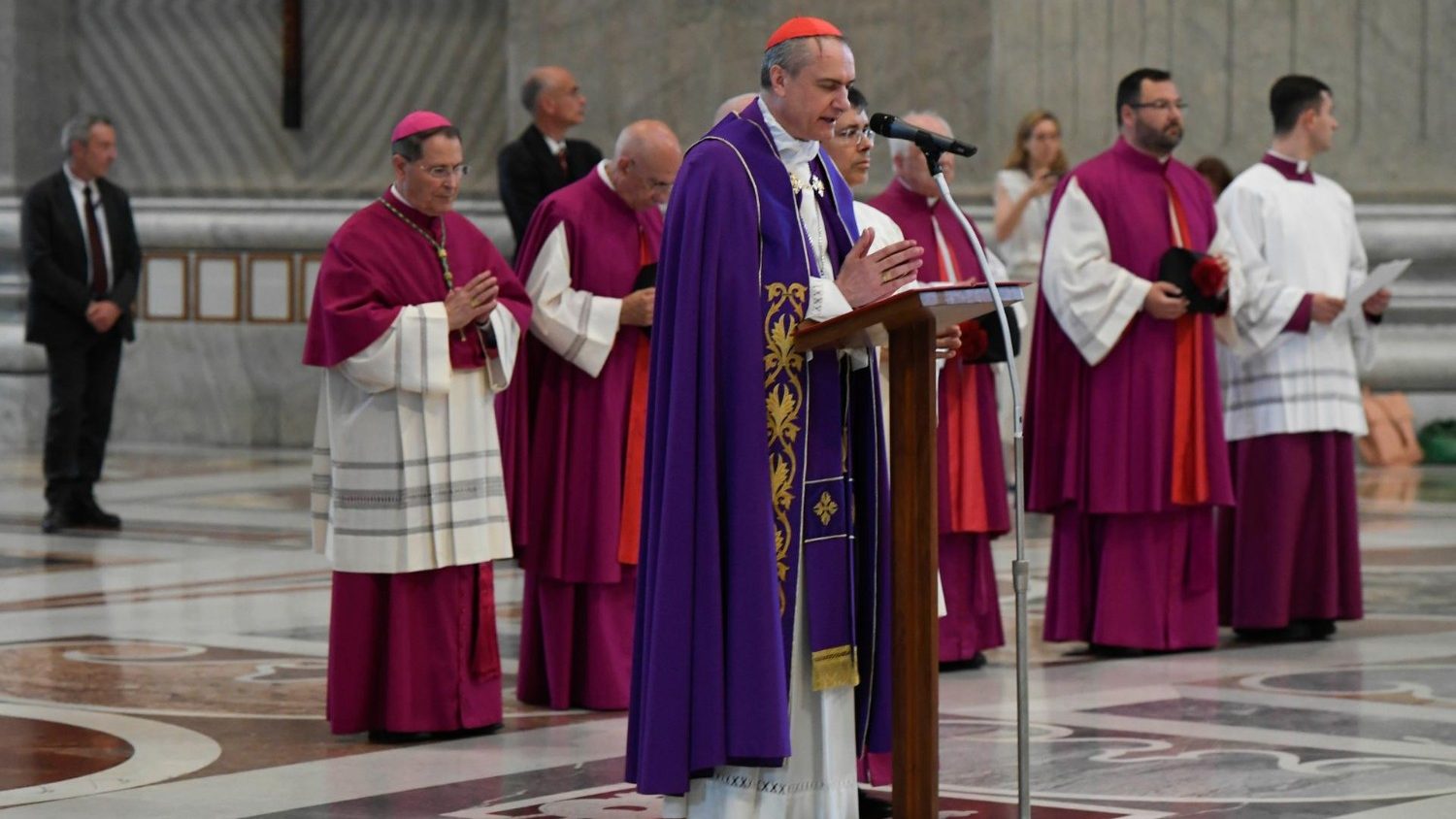Vatican City – On Friday, October 10, 2025, St. Peter’s Basilica became the scene of yet another episode of unprecedented gravity. While the faithful were passing through the Holy Door and participating in the Eucharistic celebration, a man climbed onto the Altar of the Confession, beneath Bernini’s Baldachin, completely undressed, and attempted an act of urination in front of the shocked congregation.
A gesture not only offensive to decency, but one that constitutes a grave profanation of the holiest place in Christendom. It is the third incident of this kind to occur under the administration of Cardinal Mauro Gambetti, Archpriest of St. Peter’s Basilica and Vicar General of the Pope for Vatican City.
A disturbing sequence of sacrileges
The first incident dates back to June 1, 2023, when a thirty-year-old man, naked and with the words “Save children of Ukraina” written on his back, climbed onto the High Altar. The images, once again, circulated around the world, provoking shock and indignation.
On June 3, the Archpriest presided over a penitential rite with the canons to repair the outrage, as prescribed by the Ceremoniale Episcoporum.
On February 7, 2025, another man, of Romanian origin, passed unhindered through the security barriers, overturned six candlesticks, and severely damaged the altar. No one intervened promptly, and on that occasion no act of reparation was ever performed.
Now, with the October 10, 2025 incident, the measure seems full. Three profanations in two and a half years — a sequence unprecedented in the recent history of the Vatican Basilica, revealing a serious failure in the management of security and in the safeguarding of the sacred dignity of the site.

The intervention of Leo XIV
Pope Leo XIV, upon learning of the episode and viewing the video published by Silere non possum on its website and social media channels, personally spoke with Cardinal Mauro Gambetti, expressing deep dismay and sorrow. The Holy Father ordered that a penitential and reparatory rite be celebrated as soon as possible, as required by liturgical law, “to restore the holiness of the place and to ask God’s forgiveness for the offense committed.”
The rite could have been held already on Saturday, October 11, 2025, but Cardinal Gambetti chose not to proceed, for reasons that remain unclear. Only after the Pope’s firm intervention, urging that the reparation be performed without further delay, did preparations begin. However, since the Ceremoniale Episcoporum prescribes that the rite be held on a weekday, the Pontiff instructed that it take place at the earliest possible weekday, in accordance with liturgical norms.
The liturgical norm: when a church is profaned
The Ceremoniale Episcoporum, no. 1070, is explicit: “A church is profaned if, to the scandal of the faithful, gravely injurious actions are committed within it, which, in the judgment of the local ordinary, are so serious and contrary to the sanctity of the place that it is no longer lawful to perform worship there until the injury has been repaired by a penitential rite.”
The text explains that a gravely profaned church cannot be used for worship until it has undergone a rite of reconciliation, a solemn act entrusted to the diocesan bishop or, in the case of the Vatican Basilica, to its Archpriest as Vicar of the Pope.
The penitential rite of reparation
The rite of reparation for a profaned church, as described in the Ceremoniale Episcoporum, is among the most solemn forms of public supplication in the Catholic liturgy. When a church has been the site of “gravely injurious actions” — such as offenses against the sacred mysteries, blasphemous gestures, or acts violating human dignity — the place loses its suitability for worship until it is reconciled through a penitential celebration.
The Ceremoniale stipulates that the bishop preside, signifying the participation of the whole local Church in sorrow and reparation. Ordinarily united with the Eucharistic celebration, the rite begins with a penitential procession from a nearby church or fitting place to the profaned church. Upon entering, the bishop sprinkles holy water upon the altar and the walls, a symbol of purification. This is followed by the Liturgy of the Word, with readings recalling conversion and forgiveness, and then the Eucharistic celebration, during which the altar is reconsecrated to the real presence of the Lord.
The rite offers rich pastoral possibilities: it invites the whole diocesan community to unite in repentance, encourages the personal conversion of the faithful through preaching and confession, and helps rebuild ecclesial communion wounded by sin. Thus, the ceremony is not merely a juridical or formal act, but a deep ecclesial gesture of purification, penance, and renewal, through which the community acknowledges its frailty and renews its faith in the mystery of Christ who “makes all things new.”
p.B.S.
Silere non possum